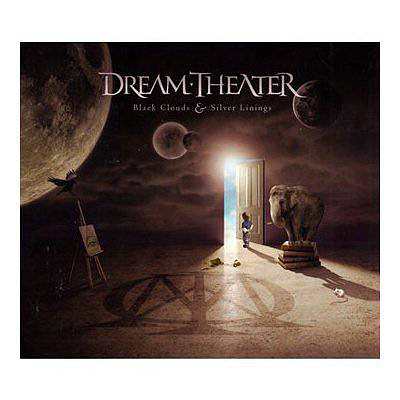WHILE I was going through the mountain of CDs I was supposed to review over the last couple of months, one album caught my eye — Dream Theater’s latest, Black Clouds & Silver Linings.
It reminded me about this rather forgotten concept in music — the ”supergroup” — and it had me YouTube-ing the whole day.
A supergroup is kind of like an NBA All-Star game, or say if Manchester United somehow managed to buy Lionel Messi, Cesc Fabregas, Fernando Torres and Cristiano Ronaldo (*fingers crossed*).
It’s when a bunch of famously talented musicians or artistes decide to form a band; and of course, the results are usually pretty awesome — lots of crazy technical skills and ground-breaking music.
Dream Theater is one such supergroup, with their members coming to be recognised as some of the best musicians on their respective instruments since they started out, especially drummer Mike Portnoy and guitarist John Petrucci.
Now the whole idea of a supergroup might not make as much sense these days (unless you’d like a supergroup of Nick Carter, Gary Barlow, Ronan Keating and Justin Timberlake), but thanks to wonders of video streaming, the supergroups of old — and the few real ones we have today — can give young musicians something to aspire to with how they blast open boundaries in music, both in terms of skill and musicality.
The best example of that would be Portnoy and Petrucci’s real supergroup, Liquid Tension Experiment, a side project with keyboard player extraordinaire Jordan Rudess (who is now part of Dream Theater) and veteran sessionist Tony Levin on bass.
Basically, they’re a bunch of show-offs, but in a good way. Their progressive rock instrumental style allows them to demonstrate their incredible individual skills with long solos and lots of crazy riffing between Petrucci and Rudess.
The first supergroup to achieve mainstream success was ’60s blues-rock trio Cream, which featured a young English electric guitar genius by the name of Eric Clapton.
Clapton was already something of a guitar god at the time with his innovative work on the electric guitar, while the other two members, Jack Bruce and Ginger Baker, were both prominent British jazz musicians.
The following decade would see the rise of a number of supergroups such as the Mahavishnu Orchestra (with John McLaughlin and Billy Cobham), as the jazz fusion movement produced some of the greatest instrumentalists ever.
Fusion group Weather Report, founded by former Miles Davis musicians keyboardist Joe Zawinul and saxophonist Wayne Shorter, achieved critical acclaim following their debut album in the early ’70s, but it was the addition of Jaco Pastorius that turned the band into a bona fide supergroup.
Pastorius is widely regarded as the greatest bassist of all time, even though his tragic death had cut short his career. Another ’70s fusion band, Return to Forever featured another bass pioneer, Stanley Clarke, but their ”classic” line-up was even more glamourous than Weather Report — jazz keyboard legend Chick Corea, guitar wizard Al Di Meola and drummer Lenny White completing the group.
Fast forward to the ’90s, and we have the live virtuoso guitar supergroup G3. Steve Vai and Joe Satriani are the regular members in this on-going concert tour, with each show featuring a third ”guest” guitarist.
Thankfully, supergroups aren’t totally dead. Since 2007, hip-hop/R&B heavyweights Kanye West, Pharell Williams and Lupe Fiasco have joined forces to work on a side project called Child Rebel Soldier. They’ve already released a single, Us Placers, and toured together, but their full-length debut album is still in the works.
A few not-so-mainstream acts such as SMV (bassists Stanley Clarke, Marcus Miller and Victor Wooten) and Chickenfoot (Van Halen’s Sammy Hagar and Michael Anthony, Red Hot Chilli Peppers’ Chad Smith, and Joe Satriani) are still keeping this awesome concept alive.



Tell us what you think!